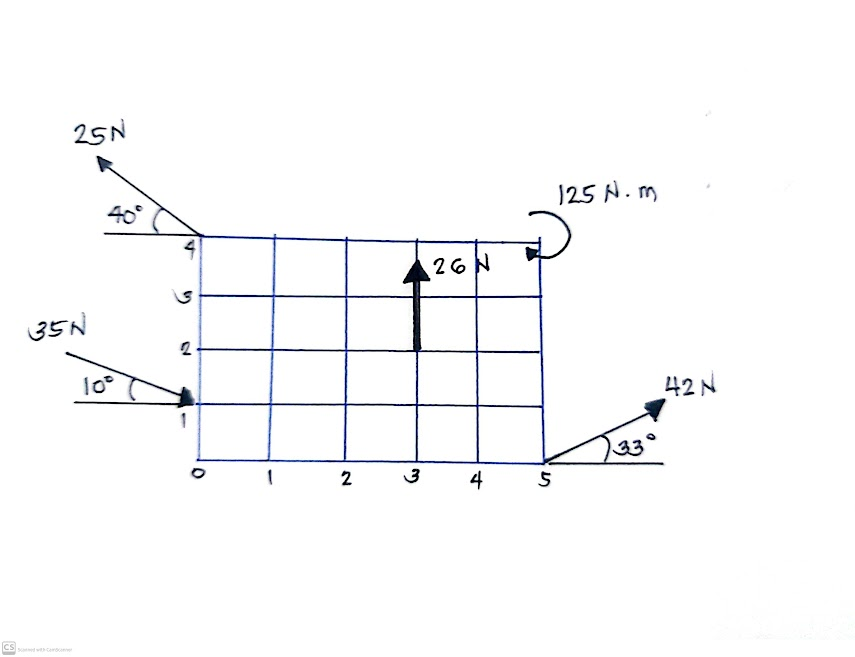2. From the given set of system shown. a.) Which of the following gives the resultant of the force system. b.) Which of the following gives the angle that the resultant makes with the horizontal measured counter-clockwise c.) Which of the following gives the distance of the resultant from the intersection of x and y axes.
2. From the given set of system shown. a.) Which of the following gives the resultant of the force system. b.) Which of the following gives the angle that the resultant makes with the horizontal measured counter-clockwise c.) Which of the following gives the distance of the resultant from the intersection of x and y axes.
An Introduction to Physical Science
14th Edition
ISBN:9781305079137
Author:James Shipman, Jerry D. Wilson, Charles A. Higgins, Omar Torres
Publisher:James Shipman, Jerry D. Wilson, Charles A. Higgins, Omar Torres
Chapter16: The Solar System
Section: Chapter Questions
Problem 4FIB
Related questions
Topic Video
Question
2. From the given set of system shown.
a.) Which of the following gives the resultant of the force system.
b.) Which of the following gives the angle that the resultant makes with the horizontal measured counter-clockwise
c.) Which of the following gives the distance of the resultant from the intersection of x and y axes.

Transcribed Image Text:25N
40°
125 N. m
26 N
35N
42 N
33°
2
3
4
cs
Sed withCar
Expert Solution
This question has been solved!
Explore an expertly crafted, step-by-step solution for a thorough understanding of key concepts.
Step by step
Solved in 2 steps

Knowledge Booster
Learn more about
Need a deep-dive on the concept behind this application? Look no further. Learn more about this topic, physics and related others by exploring similar questions and additional content below.Recommended textbooks for you

An Introduction to Physical Science
Physics
ISBN:
9781305079137
Author:
James Shipman, Jerry D. Wilson, Charles A. Higgins, Omar Torres
Publisher:
Cengage Learning

Glencoe Physics: Principles and Problems, Student…
Physics
ISBN:
9780078807213
Author:
Paul W. Zitzewitz
Publisher:
Glencoe/McGraw-Hill

College Physics
Physics
ISBN:
9781938168000
Author:
Paul Peter Urone, Roger Hinrichs
Publisher:
OpenStax College

An Introduction to Physical Science
Physics
ISBN:
9781305079137
Author:
James Shipman, Jerry D. Wilson, Charles A. Higgins, Omar Torres
Publisher:
Cengage Learning

Glencoe Physics: Principles and Problems, Student…
Physics
ISBN:
9780078807213
Author:
Paul W. Zitzewitz
Publisher:
Glencoe/McGraw-Hill

College Physics
Physics
ISBN:
9781938168000
Author:
Paul Peter Urone, Roger Hinrichs
Publisher:
OpenStax College